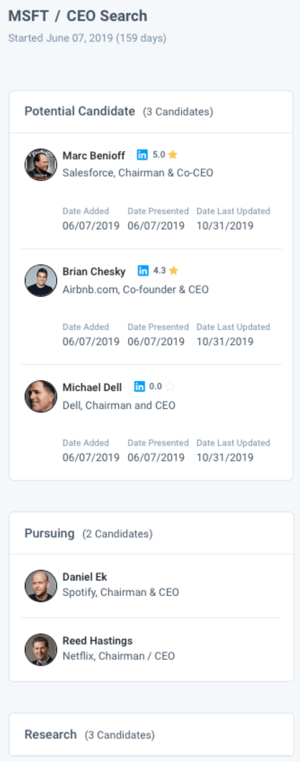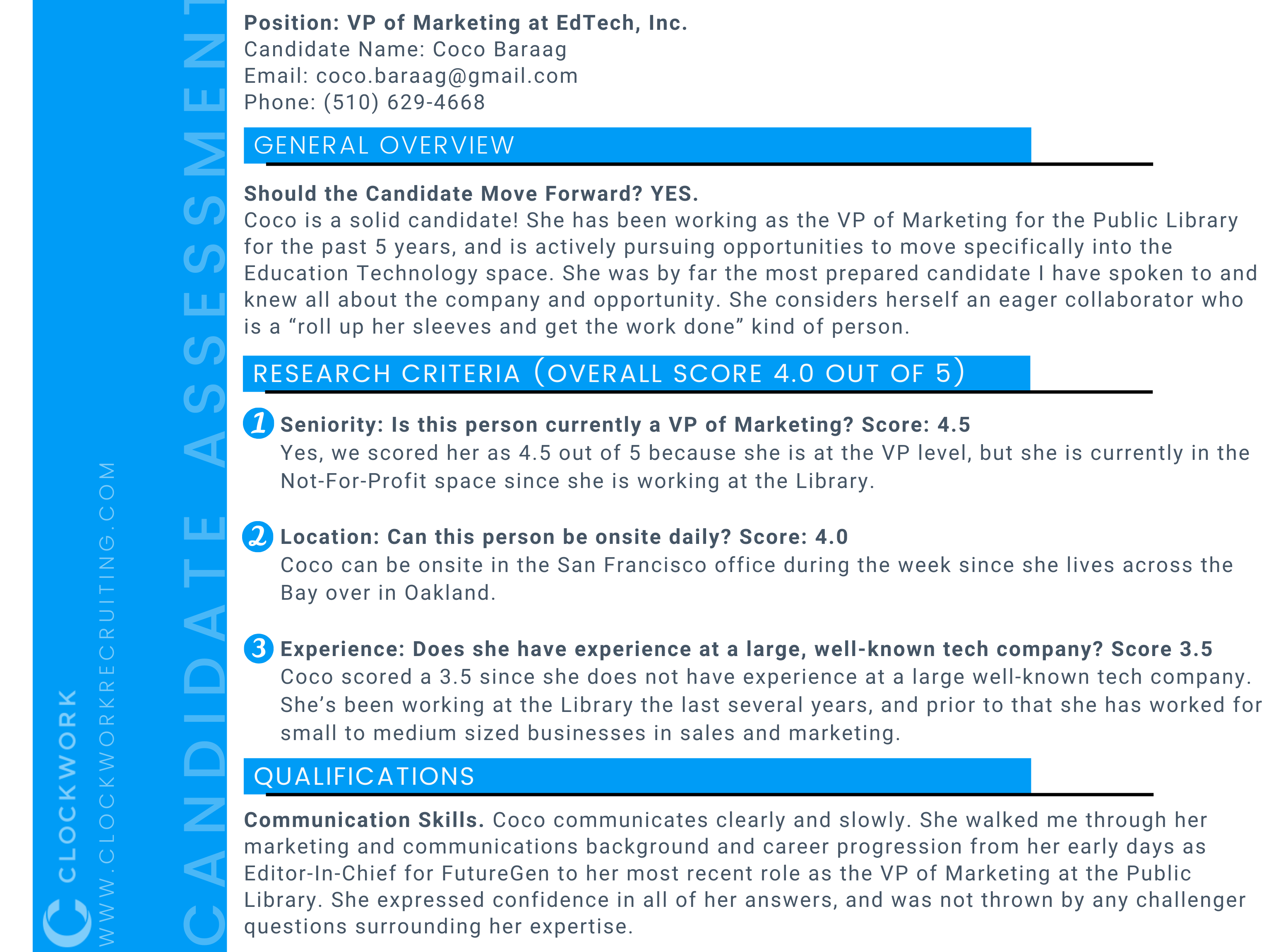Executive Recruiting Best Practices: Candidate Assessments

So you’ve reached out to the candidates with the most potential and have dwindled that list down to the top 10%. By this point, you should have garnered as much information as possible on those you interviewed during your outreach. More specifically, you should have ascertained whether they are QIA, how they fit the role and how they compare with their peers.
The more thorough your outreach, and the more you document your findings, the more information you have to base your assessment on. Your focus in this stage comes down to presenting your clients with valuable information and setting the scene for final interviews.
Be the Consultant That Your Client Needs
You as the search firm are the expert as well as the consultant and the informant. Given your expertise in your field of specialization, your client is going to value what you have to say. As their consultant, they are going to rely on your unbiased input to aid in their decision making. Lastly, as their informant, they are going to rely upon you to provide every single detail discovered about the candidate. You can see why, as a key player in this process, your communication is the primary focus during this stage.
Your client is dependent on you to guide them towards a final decision that can impact their company and this is best done by being transparent. Meaning, you're periodically updating them through status calls or reports and showcasing the results of your extensive research. Communicating transparently not only in this stage but throughout the search goes a long way in developing a measure of trust with your client. With the information you provide them, they are better able to provide conclusive feedback that takes the search one step closer to a successful placement.
Showcase Candidates and Candidate Assessments Using Detailed Reports

So you now know how important it is to remain transparent with your client. Like we mentioned earlier, the best way to keep your clients looped in throughout the process is through periodic status calls and reports. However, you don't have to create pdf documents or parse through online sheets to prepare materials for your clients. With an executive recruiting software like Clockwork, preparing for your status calls can take half the time it used to with the Status Report feature. In addition to cutting preparation time in half, it displays your information in a clean, easy to read layout that you can fully customize.
Say for example it's early on in the project and you want to show your client a long list of the candidates you found. You can customize the view of your status report to display only a short summary of the candidates. You can then pair this summarized report with other research findings such as a coverage report of targeted companies to give your client more context. The further the search progresses the more details you can add such as resumes, criteria scorecards, and most importantly Candidate Assessment Reports.
As your clients make their way throughout this search process it's important to note the depth of information they'll need at each stage and how brief or detailed it should be. This is why status reports featured on Clockwork are 100% customizable to display information as abbreviated or as thorough as you need it to be.
What to Include in Your Candidate Assessment Report
When it comes time for your clients to make an assessment, it's critical to make your status reports is as comprehensive as possible. The best way to do this is to include a Candidate Assessment Report (CAR). A CAR is a comprehensive report that includes everything you have uncovered about the candidate thus far in addition to your notes and final recommendations. The following are details you should include in this report.
Research Findings
First, you want to compile all your research notes here for your client to view. This can include the candidate's research criteria scorecard as well as a brief summary of how they measure up to the job description and criteria.
QIA
Besides your research findings, you want to include a more in-depth QIA analysis of your candidates. QIA stands for Qualified, Interested, and Available. Like it sounds, during the outreach stage, a search firm will determine how qualified, interested, and available a candidate is. Think of it as other standard criteria against which candidates are evaluated. You can read more about QIA in our Best Practices for Executive Recruiting Outreach blog.
Red Flags & Outstanding Notes
Here you want to include anything noteworthy that stood out to you during your initial screening in favor or not in favor of the candidate. For example, this can include:
- Skills demonstrated but not recorded in the resume
- Anything that highlights the candidate as a top contender whether it's their experience, skills, etc.
- Qualities that you know the client values and that the candidate possesses
Recommendations
Once you have laid out your assessment of the candidate in the above categories, you want to give your client your best recommendation on how to move forward with their interviews. You want to give them an overview of what to watch out for, what to ask about, and overall provide them with enough information so they feel confident making vital decisions.
The main goal of the Assessments stage of the executive recruiting process is to prepare your clients for their final candidate interviews by providing them with relevant information. With an executive recruiting software like Clockwork, this process can take little to no time at all. Showcase candidates to your client straight from the Clockwork platform or pull this information to use in your own assessment that you can then use in your Candidate Assessment Report.
The Example Status Report and Candidate Assessment Report in this article is from Clockwork’s free online course on The Eight Stages of Successful Retained Search. Register today for many more examples and best practices.
The Eight Stages of Successful Retained Search
- Intro to the Eight Stages of Successful Retained Search
- A.I.'s Future Impact On The Executive Search Process
- Search Firms Are Divided If A.I. Can Intelligently Source and Assess Finalist Candidates
- Search Firms Believe A.I. Will Have Little Impact On Final Stages Of A Search.
- Search Firms See A.I. Supplementing Most Of Their Marketing Efforts
To learn how The 8 Stages of Successful Retained Search are incorporated and supported in Clockwork, read our support documentation. To see it in action, view this playlist of videos.
Christian Spletzer
After years of working as an executive recruiter, Christian Spletzer founded Clockwork to improve how search firms and clients work together on retained search projects. He designed Clockwork to help recruiters demonstrate their consultative value to their clients at every stage of each project.

